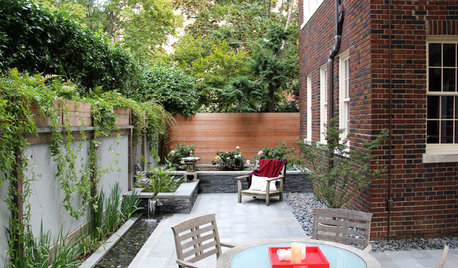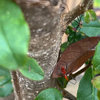safe/organic prevention for japanese beetles
grossepointe
10 years ago
Related Stories

MORE ROOMS6 Garage Organizing Tips That Really Work
National Clean Out the Garage Day: Here's how to clear the clutter and organize what's left
Full Story
GARDENING GUIDESHow to Switch to an Organic Landscape Plan
Ditch the chemicals for a naturally beautiful lawn and garden, using living fertilizers and other nontoxic treatments
Full Story
GARDENING GUIDESOrganic Matters: Thwart Insect Pests With Trap Crops
Add a few sacrificial plants to your garden to lure insects away from the harvest
Full Story
EDIBLE GARDENSNatural Ways to Get Rid of Weeds in Your Garden
Use these techniques to help prevent the spread of weeds and to learn about your soil
Full Story
MONTHLY HOME CHECKLISTSYour Fall Home Maintenance Checklist
Prep your house and yard for cold weather with this list of things to do in an hour or over a weekend
Full Story
DECORATING GUIDES10 Tree-Hugging Interiors That Work Around Nature
Bursting up through the floor, planted in an indoor patio or potted in any room you choose, trees bring an elegance that's organic
Full Story
DECLUTTERING10 Types of Clutter to Toss Today
Clear the decks and give the heave-ho to these unneeded items
Full Story
GARDENING GUIDES6 Steps to Creating Your Butterfly Garden
Encourage these fanciful winged beauties to visit your garden while helping restore their fragmented habitat
Full Story
GARDENING FOR BUTTERFLIESBring on the Birds: Natural Habitat Ideas for Gardens of All Sizes
Provide nesting, watering and perching spots inspired by the Costa Rican jungle and watch the birds flock on over
Full Story
PATIOSPatio Details: Dog Won’t Trample the Plants With This Design
An Asian-inspired backyard redo adds clean lines, a new water feature and a sense of spaciousness — with room for a large beloved dog
Full Story







Natures_Nature
Kimmsr
Related Professionals
Folsom Landscape Architects & Landscape Designers · Tempe Landscape Contractors · Waterbury Landscape Contractors · Brunswick Landscape Contractors · Dedham Landscape Contractors · Fairview Landscape Contractors · Goodlettsville Landscape Contractors · New Brighton Landscape Contractors · Northport Landscape Contractors · Soddy Daisy Landscape Contractors · Wallingford Landscape Contractors · York Decks, Patios & Outdoor Enclosures · Del City Decks, Patios & Outdoor Enclosures · Riverside Decks, Patios & Outdoor Enclosures · Salt Lake City Decks, Patios & Outdoor Enclosureswayne_5 zone 6a Central Indiana
Kimmsr
wayne_5 zone 6a Central Indiana
jbraun_gw
jbraun_gw
bear_with_me
Kimmsr
henry_kuska
nandina
lisaslettuces
terri1335
Kimmsr
Michael
wayne_5 zone 6a Central Indiana